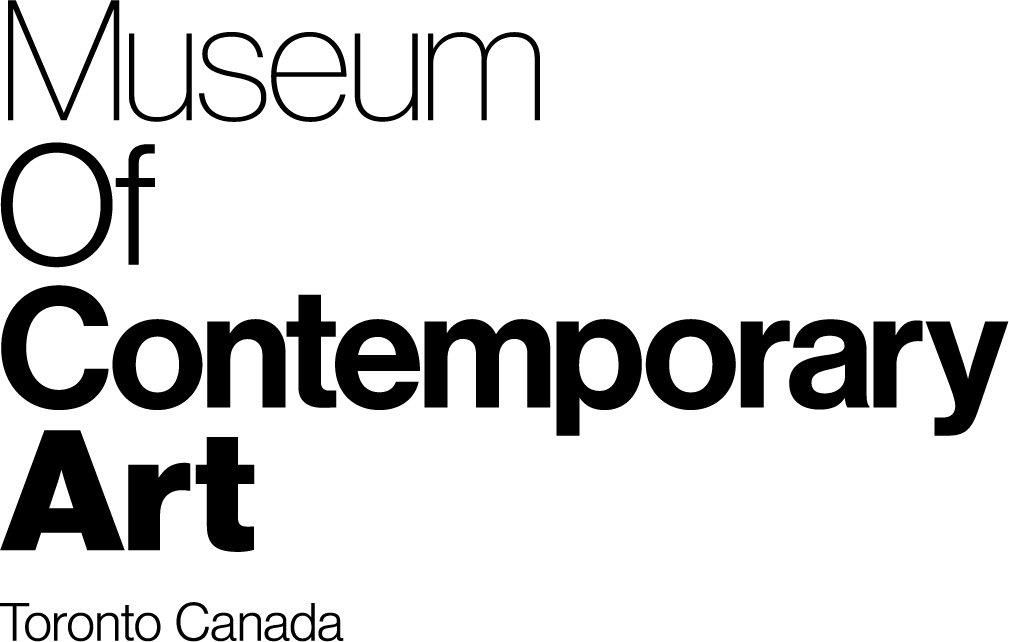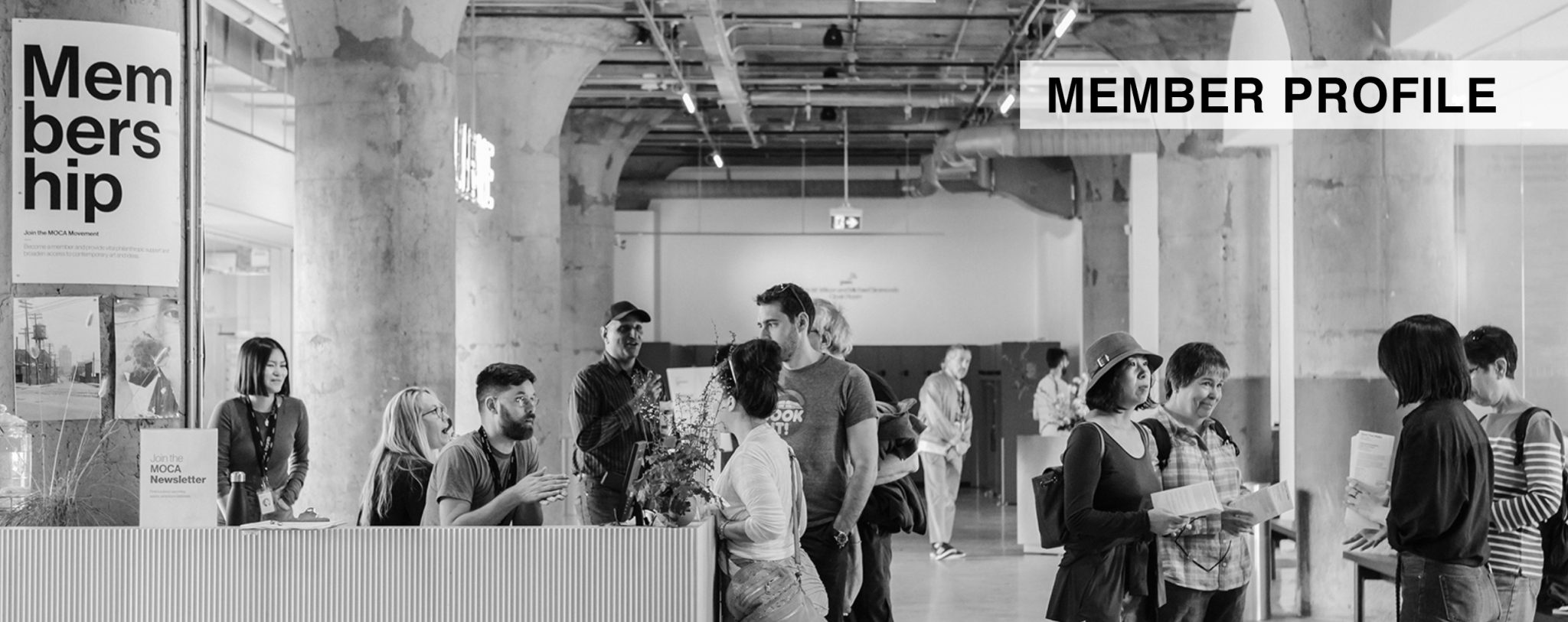From a career as a psychiatric nurse to co-founding an illustration program at Seneca, long-time MOCA member, JoAnn Purcell, has dabbled in multiple art forms that have all informed her current practice and passion. Learn more about her memorable visits to the museum, her important work as an educator and the deeply personal comic book project JoAnn collaborated on with her daughter over the course of 3 years.
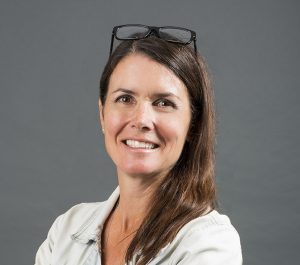
JoAnn Purcell, Courtesy the artist.
What made you join MOCA as a member?
I used to visit MOCA quite often when you were at the Queen and Ossington location and then when you moved, I was very curious about the new space. Your building is so beautiful! What I love about the new MOCA is this involvement of the community. It is not an ivory tower for people who are established and recognized exclusively, there is a real community feel to it. As a member I get a heads-up to museum events, I have been to a few of your Speaker Series. I just love the space, the bookstore, and how the museum was a collection of art as opposed to disconnected businesses in one space. I love the feeling of MOCA and how inclusive it is. It really does feel like a different museum.
Tell us about a memorable visit.
I clearly remember the Chantal Akerman exhibit. I was not very familiar with her work but I learned about her through the museum. She was an extraordinary filmmaker. I also remember a speaker series – Female Voices and the intersection with Akerman’s work. The talks didn’t take place in a theatre, they were on the ground floor of the museum with the oversized foam blocks (Demos – A Reconstruction by Andreas Angelidakis) so it felt even more immersive in that setting.
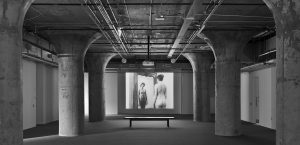
MOCA, Chantal Akerman, “In The Mirror” 2007 Photo Credit: Tom Arban Photography
Your primary art practice is illustration but that’s not where your career started. Tell us about you transition into the arts world and your work as an educator.
I’m one of those artists that has been meandering over the course of time. I actually started my career as a psychiatric nurse because my parents believed it was really important to study something that would provide a living. I worked as a nurse while I put myself through art school at the Ontario College of Art (now OCADU) and studied drawing and painting and freelanced in graphic design and illustration. For many years I also did visual effects for film and television but it wasn’t my passion. I kept coming back to my love of drawing and painting.
I started teaching at Seneca College in the animation department. About a decade ago, I co-founded the Illustration Diploma at Seneca College with my colleague, Jim Graves. It has become a really successful two-year diploma. I teach drawing, painting, illustration history and critical thinking. I also occasionally teach a third-year art history course – Comics and Social Justice at York University.
I was lucky to be able to find a space where I could draw and paint in demos to students but I really missed my own art practice. Being full-time faculty, building curriculum, working with professionals and hiring other teachers is a real privilege and is a great job but it really took me away from my first love which is drawing and painting. I found a way to return to it by going back to school. I am near the end of my PhD in Critical Disability at York University and will soon be defending my dissertation What does a child with an intellectual disability really want? An investigation through comics, collaboration, caregiving and quantum physics.
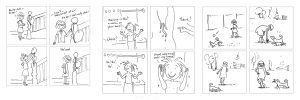
Panels from Disability Daily Drawn, Courtesy the artist, JoAnn Purcell
What was the genesis of Disability Daily Drawn and how can we get to see it?
In the course of my PhD, I took a methods course with Fine Arts graduate students. The wonderful thing about Critical Disability Studies at York University is it’s so interdisciplinary. The professor Barbara Balfour invited Natasha Myers in to speak to the class about a project where she did a dance-a-day for a year and recorded it through a single gestural drawing. It led me to begin thinking about a collaboration with my daughter, Simone, who was born with the genetic difference Down syndrome. I had become aware of comics as an emerging form of academic scholarship and so in the context of my studies, I started making these 4 panel comics and I drew one every day for 3 years. There’s something about doing something every day that makes you get so much better at it, at listening, observing, drawing. I was interested in the process of suspending my own voice completely and record what was important to Simone and make her voice material.
After three years, I have 1085 pages of 4 panel comics that fill 17 sketchbooks. I’ve written about them and talked about them at conferences. I exhibited them in a gallery at York University this past fall. For that exhibit, I didn’t want to curate them, instead I wanted to create the space for her voice to take up as much room as possible. We put out all the comics pages (scanned and printed on card stock) on 2 ledges around the gallery – one ledge was at her eye level at the beginning of the project (she was 10 years old) and then another eye level when we finished the project 3 years later. You can see the gallery walk-through here.
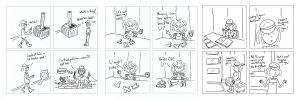
Panels from Disability Daily Drawn, Courtesy the artist, JoAnn Purcell
How has the COVID-19 pandemic impacted your work and are you pivoting online?
The arts have really rallied in an incredible way. We’re all trying to figure out how to educate and teach art that is more hands-on and find a way to bring that to an online universe not knowing what the realities for our students might be. We don’t know if someone is in a very uncomfortable and cramped living situation or without access to computers etc. It is an evolving situation and I think the key will be to continue to check in with students in real time in the hope they can tell us what is working and what is not.
So much of art and education is moving online, what effect do you think that has on learning?
I was teaching a class that was prepping for their grad show in April so when that got cancelled, we created an online gallery to showcase students’ portfolios. They created videos so they could actually speak to their work and then we held a digital reception to celebrate their graduation. We were happy to create space for gathering and commemoration but ultimately I think it’s impossible to replace physical human connection. Digital spaces deplete your energy whereas a classroom of students can give you energy and I think there is something about human chemistry when we’re in a room together – there’s something in our entanglement as humans that is very different than this pixelated world of digital meetings and classrooms.
Who are some artists that are creating work at the intersection of art and disability that you’ve been following and admiring?
I love the work of the artist Judith Scott. Curator Amanda Cachia is putting together some innovative and challenging exhibits. I was sorry to miss this exhibit of Lorenza Bottner’s work at the UofT Art Centre but was thrilled to find they had put most of the content online.
This new digital space that has brought down barriers in a way, are there particular spaces or communities you hope to be able to participate in more?
I love that I can actually attend events and performances that would ordinarily require travel. The generosity and creativity of the arts community has really been heartwarming to witness. I think I most enjoy the work that is live in the moment and globally we can all watch and experience the event or performance together.
The Met Opera in New York City hosted a live at home gala – imagine a zoom call where each person sang or played their instrument from their livingroom simultaneously to recreate a choir or symphony. It was extraordinary. Also in NYC, the Society of Illustrators is hosting live life drawing every week. It takes some getting used to, but is a fun way to participate and feel connected. I miss going to the theatre, but I am looking forward to Toronto’s Opera Atelier’s live Together/Apart showcase next week.
What is something really inspiring you’ve come across since the lockdown began?
The collective creative response from the arts community.
Where can we find more of your work online?
Some of my upcoming talks have been cancelled sadly – one I was really looking forward to was an invitation to Finland in June of this year to present my project. In place of this, the invited group of writers/creators will be participating in a virtual workshop this summer and publish the works next summer. In the meantime, I’d love to share my brand-new Instagram account where I have shared some pages from Disability Daily Drawn! – @simonejocomics
Interested in being featured in the next member profile? Reach out to us at membership@mocalegacy.webpreview.site
Banner Photo by Gabriel Li
